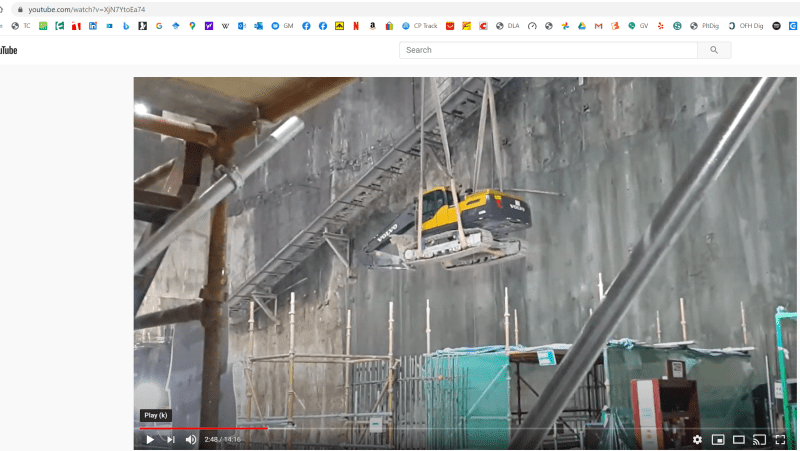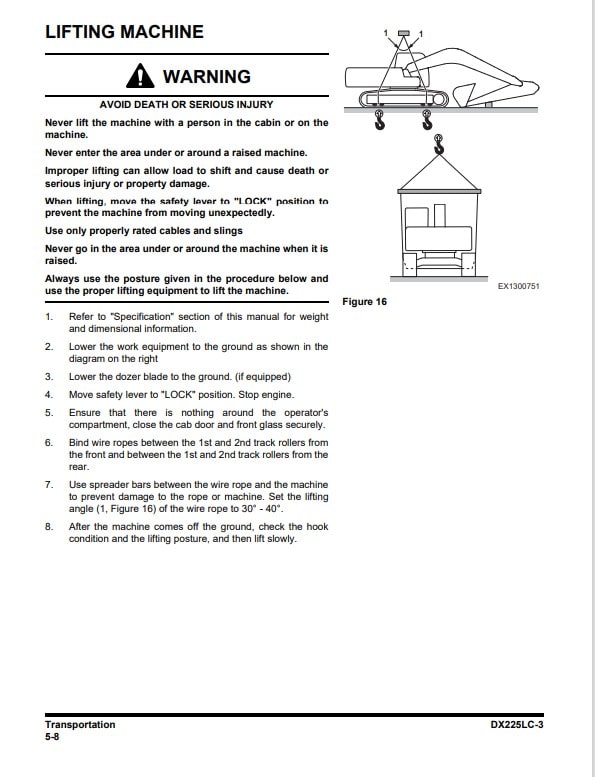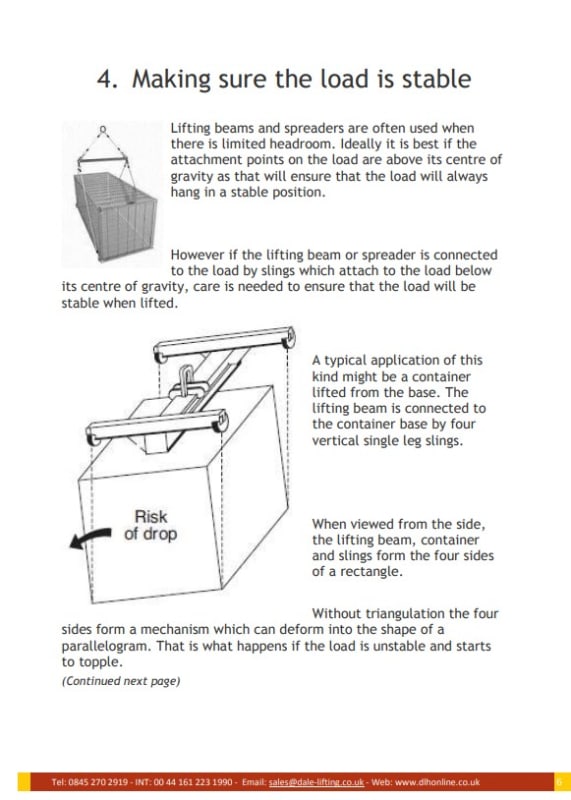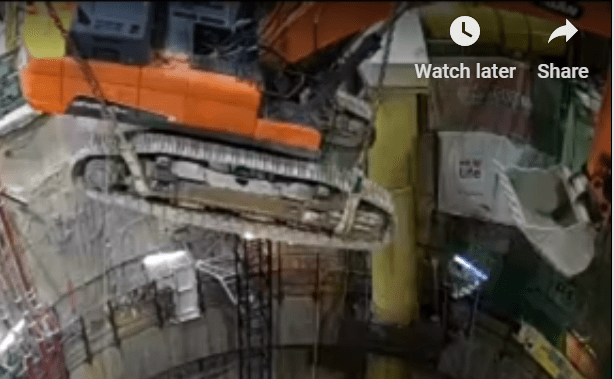The first mistake was using a fore and aft spreader.
The second mistake was inappropriate sling angles from the lift points to the spreader.
The third mistake was not securely fastening the sliding anchor points on the spreader to which the lower slings were connected.
Watch the spreader carefully.
You see it tip because of inappropriate angles.
The problem was not with anything to do with the excavator.
The problem was bad rigging on several counts.
I have done a little rigging.
I have watched the video closely several times.
By contrast.
Courtesy IRstuff
Here, the center of gravity is between the slings. If the CG is off center, the load will tip slightly until the CG is directly beneath the center of lift (at the spreader).
The slings and the spacing between them form a triangle that encloses the CG.
If the CG is off center the load may not be level but it will be stable.
In contrast, the failed rigging, when it started to shift, moved the CG closer to the front slings, putting more weight on them.
This put more weight on the front of the spreader and tipped it more.
The CG was already close to the front slings.
As more weight came on the front slings, they exerted more force on the spreader, tipping it more.
That raised the rear further.
As the spreader continued to tip, the rear rose higher and higher, putting the CG closer and closer to the front slings.
Then the CG passed the front slings and the action speeded up dramatically.
Bill
--------------------
"Why not the best?"
Jimmy Carter




